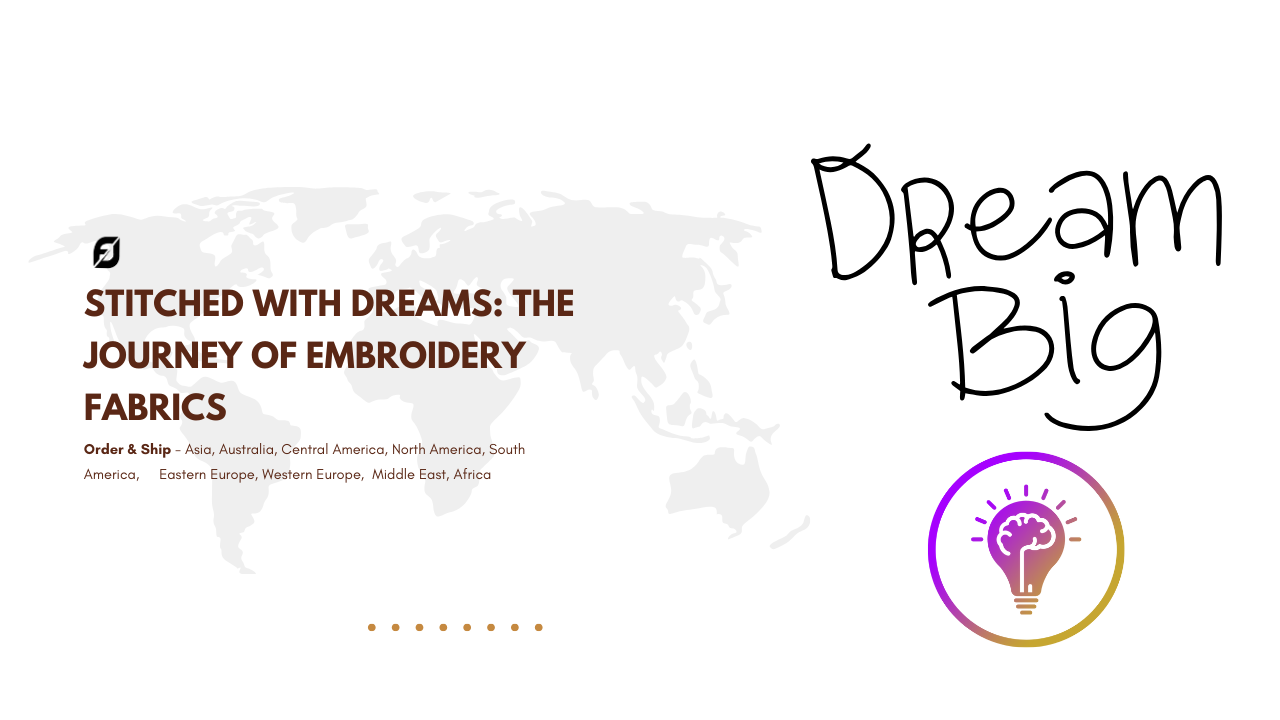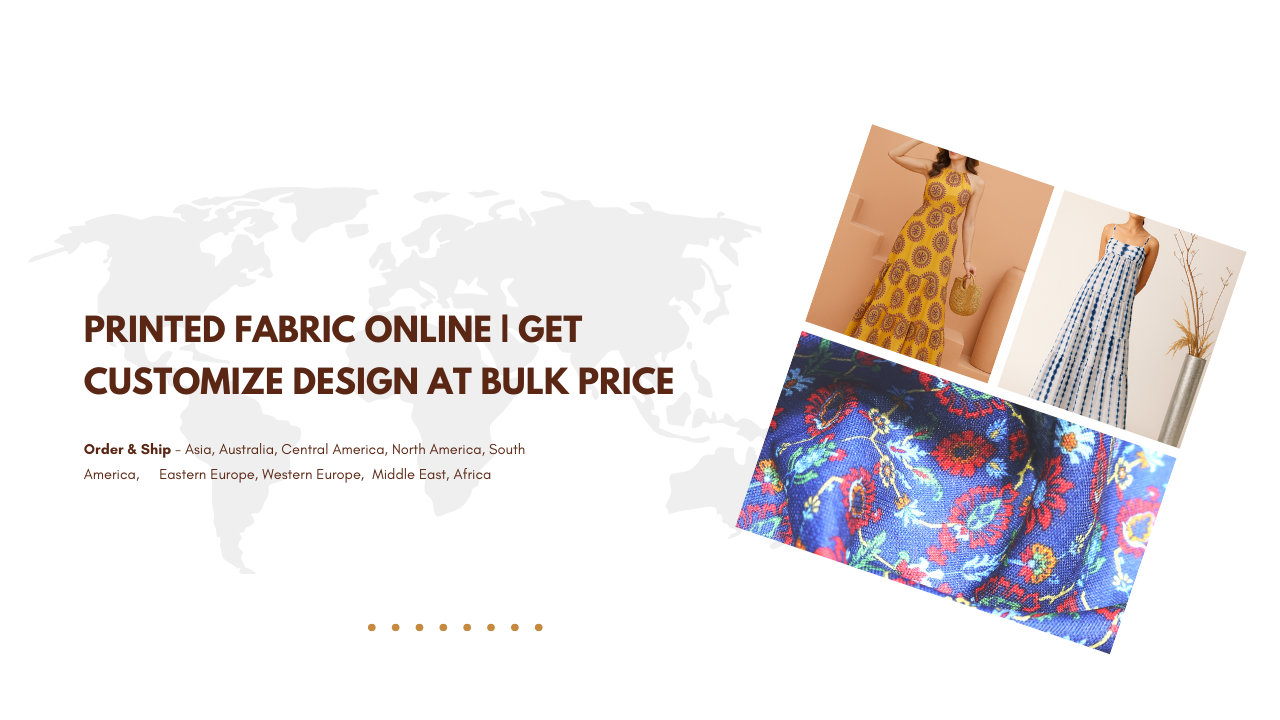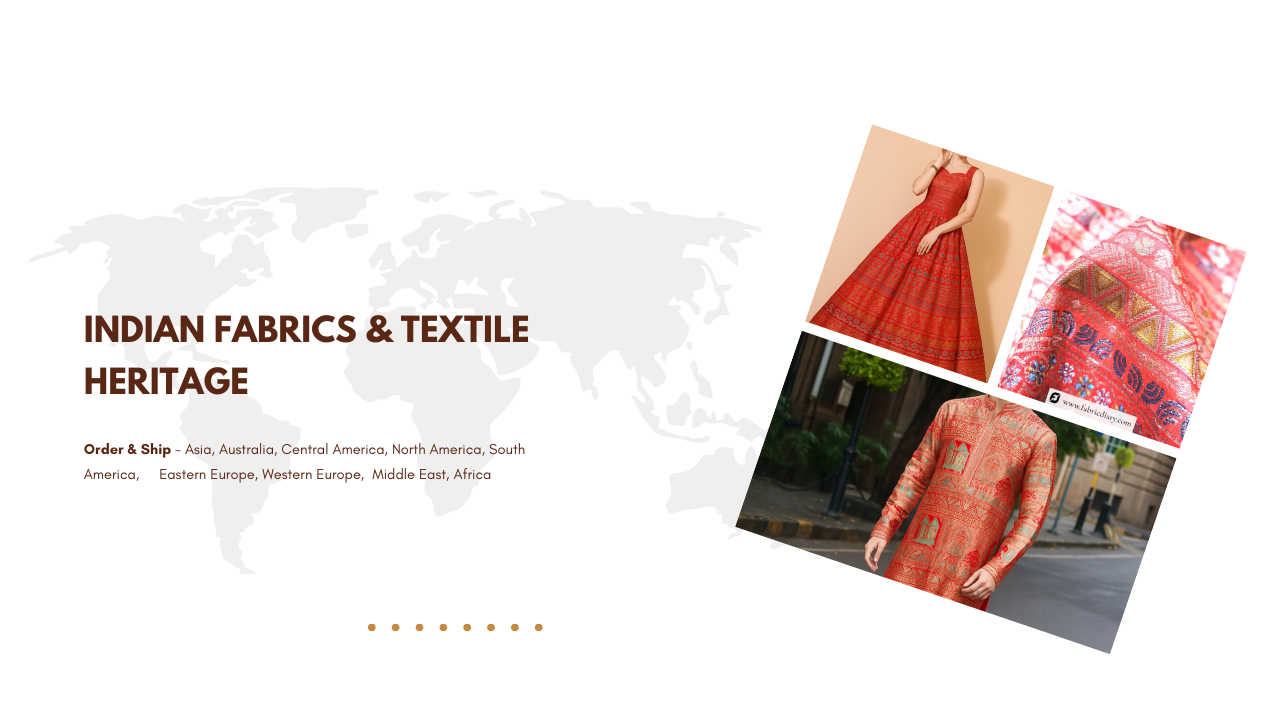It’s a warm afternoon in Jaipur, where centuries-old block printing traditions once ruled the markets. But now, in the age of digital design and online customization (Printed Fabric Online), the way people buy fabric is changing—dramatically. At the center of this shift is Fabricdiary.com, a platform that has quietly become a lifeline for designers, boutique owners, entrepreneurs, and even home decorators who believe that fabric shouldn’t be one-size-fits-all.
The Fabric Revolution Meets the Internet
For decades, buying fabric meant scouring markets, negotiating yard by yard, and settling for whatever designs wholesalers stocked. Creativity often had to compromise with availability.
But Fabricdiary has reversed this equation: now, your designs dictate the product. Here’s how it works:
Upload Your Design: Customers upload their own artwork, prints, or even sketches.
Select Your Fabric: Choose from a wide range of bases—cotton, silk, linen, polyester, rayon, and more.
Set Quantity: Fabricdiary has opened up wholesale customization starting at just 25–50 meters, dramatically lower than industry norms.
Pay Wholesale, Get Tax-Inclusive Pricing: Prices already include taxes, so there’s clarity from the start.
Flat Shipping in India: No matter if your package weighs 1 kilogram or 10, delivery in India costs just ₹99.
Global Access: For international buyers, Fabricdiary provides some of the lowest customization shipping rates, payable even at the time of dispatch.
Intricate threads & premium texture 🎨 Printed Fabric
Creative, colorful & always trending 📌 Position Printed Fabric
Perfect alignment for standout looks 🧵 Jacquard Fabric
Rich textures with woven luxury ⚪ Plain Dyeable (RFD)
Customize colors, your way 🌈 Pure Dyed Fabrics
Ready-to-stitch brilliance 🧣 Designer Dupattas
From shimmer to sheer elegance 🚚 Ready Stocks
Quick ship fabrics in bulk 👗 Kurti Fabrics
Comfort meets tradition 🆕 New Arrivals
Fresh drops, every week
The result? Accessibility, affordability, and the ability for anyone—from a college fashion student to an established export house—to see their designs woven into professional-quality textiles.
Stories Behind the Prints
Take the case of Rashmi Sharma, a small entrepreneur from Pune. For years she dreamed of starting her own line of sustainable cotton scarves. But local wholesalers demanded minimums of 250–500 meters per design—a prohibitive risk for someone just starting out.
“When I found Fabricdiary, I ordered just 30 meters of my hand-drawn lotus sketches on organic cotton,” Rashmi recalls. “Within weeks, I had my first batch of products ready. I could show something tangible to customers—without drowning in inventory. That gave me confidence to launch.”
Similarly, Arif Khan, who runs a home décor studio in Hyderabad, turned to Fabricdiary during the COVID lockdowns. “I couldn’t travel to Delhi or Mumbai markets anymore. But my clients still wanted fresh designs for sofa covers and curtains. Being able to upload a design file and receive rolls of custom linen delivered to my doorstep—it kept my business alive when supply chains were broken.”
These testimonials aren’t isolated anecdotes—they highlight how the digital customization model is democratizing creativity in textiles.
Why Custom Printed Fabric Matters Today
The global fabric industry is undergoing a paradigm shift. With fast fashion facing backlash and consumers increasingly searching for individuality, the demand for small-batch, customized design has soared.
Boutiques use custom fabrics to stand out from mass-market fast fashion.
Interior designers demand unique upholstery and drapery solutions.
Exporters test smaller volumes before committing to large-scale production.
Artists and illustrators turn their canvases into wearable art.
Fabricdiary taps into this by lowering the barriers to entry. Instead of forcing creators into bulk commitments that kill creativity, it aligns production with real demand.
The Economics of Accessible Fabric
Traditionally, custom fabric printing was out of reach for small creators:
High MOQ (Minimum Order Quantity): Industry average starts at 250–500 meters.
Opaque Pricing: Taxes, freight, and hidden fees often double the expected cost.
Inflexible Shipping: Costs skyrocketed with weight, making small-batch orders impractical.
Fabricdiary’s transparent, tax-inclusive wholesale pricing and ₹99 flat shipping rule in India flip the equation. Whether you’re ordering for a small fashion batch or decorating an entire hotel lobby, the per-meter cost remains competitive.
For global makers, the ability to pay shipping at dispatch removes financial strain for startups working on tight capital.
Customer Experience: As Smooth As Silk
Browsing through Fabricdiary’s website feels less like dealing with a wholesaler and more like interacting with a creative partner. Instead of the intimidating jargon of B2B portals, the interface speaks the language of designers.
The design upload process is drag-and-drop simple.
Fabric previews simulate how a design would look on different bases—cotton for everyday wear, silk for luxury saris, linen for home décor.
Customer support, as many testimonials affirm, is hands-on: guiding new creators about fabric weights, drape, and print clarity.
One Delhi-based fashion student shared: “I was nervous because it was my first time printing my sketches onto fabric. But the team called me, explained the differences between satin and crepe, and suggested swatches. I ended up ordering 25 meters—and used it for my final project runway show.”
Heritage Meets Technology
India’s strength has always been its textiles—handlooms of Varanasi, cottons of Gujarat, silks of Karnataka. Digital platforms like Fabricdiary are not replacing that heritage; they are re-channeling it into a global conversation.
By enabling a designer in New York to print abstract art on Jaipur cotton, or a boutique in London to test floral patterns on Indian silk, Fabricdiary is quietly globalizing India’s textile sector in the digital era.
Looking Ahead: The Future of Fabric Customization
As industries move toward sustainability and personalization, platforms like Fabricdiary could redefine not just fashion but also how homes, events, and even everyday objects are designed. Imagine:
Hotels branding their linens with unique patterns.
Wedding planners designing table fabrics to match event themes.
Artists opening side revenue streams by turning paintings into fabric collections.
With lower MOQs, transparent pricing, and global accessibility, the only limit is imagination.
In a marketplace often drowned in sameness, Fabricdiary’s model is refreshing. It returns power to creators—allowing individuals, not corporations, to decide what gets printed, in what fabric, and at what scale.
Perhaps the deeper story here isn’t even about fabric. It’s about a democratization of design. For centuries, fabric has carried human culture—our colors, patterns, and stories. Today, thanks to digital customization and platforms like Fabricdiary, anyone with a vision can see their designs come alive, stitched into the world around them.
____________________________________________________________
FAQ – Printed Fabric Online
Q1. Can I print my own design on fabric at Fabricdiary.com?
Yes, you can upload your design and choose from fabrics like cotton, silk, or linen to get your custom prints.
Q2. What is the minimum order quantity (MOQ)?
The minimum order starts at 25–50 meters per design, ideal for small businesses and startups.
Q3. Are the prices wholesale or retail?
All prices are wholesale and tax-inclusive, so there are no hidden charges.
Q4. What are the shipping charges in India?
Flat ₹99 shipping across India, whether your parcel is 1 kg or 10 kg.
Q5. Do you ship internationally?
Yes, Fabricdiary ships worldwide with lowest international shipping rates, payable even at dispatch.
Q6. Can I order different fabrics with the same design?
Yes, your design can be printed on multiple bases like cotton, linen, silk, or polyester.
Q7. How long does delivery take?
Typically, orders are dispatched within a few days (depending on fabric and quantity), and delivery timelines vary by location.






